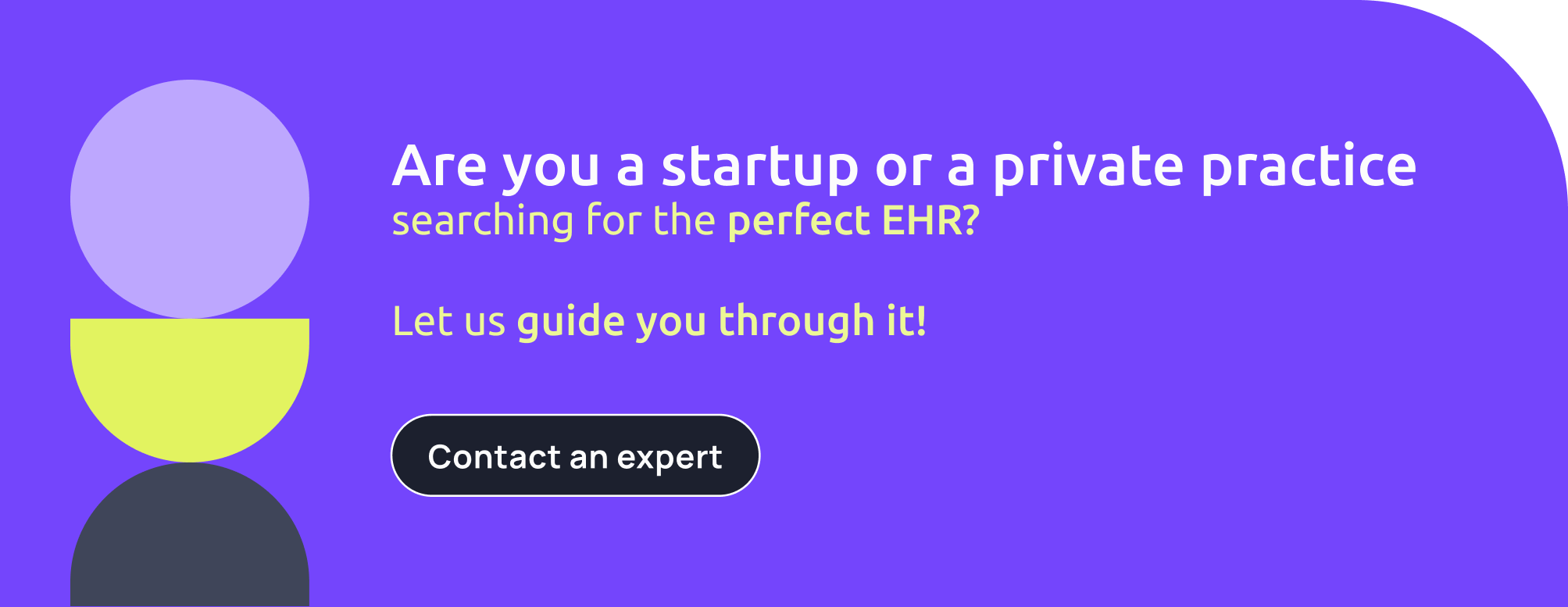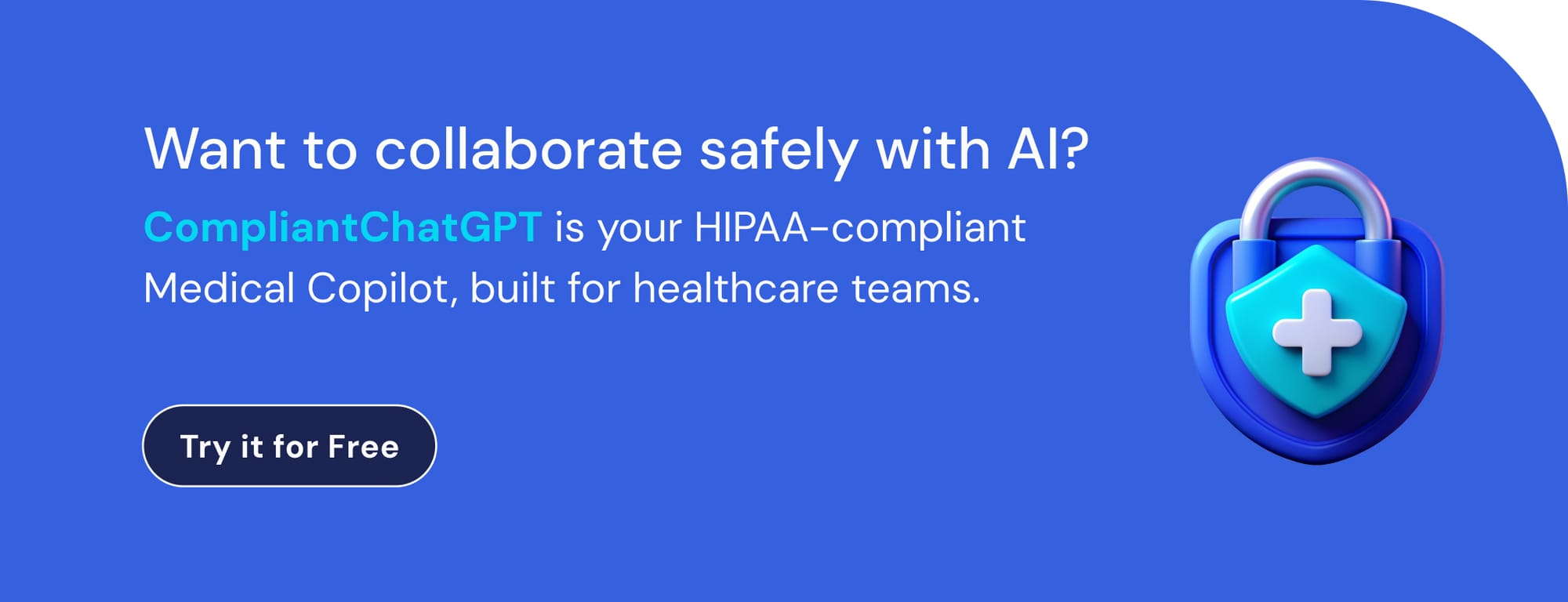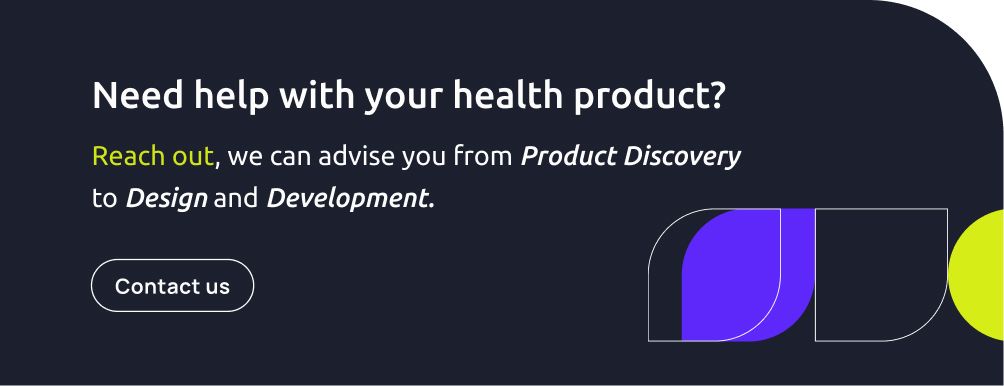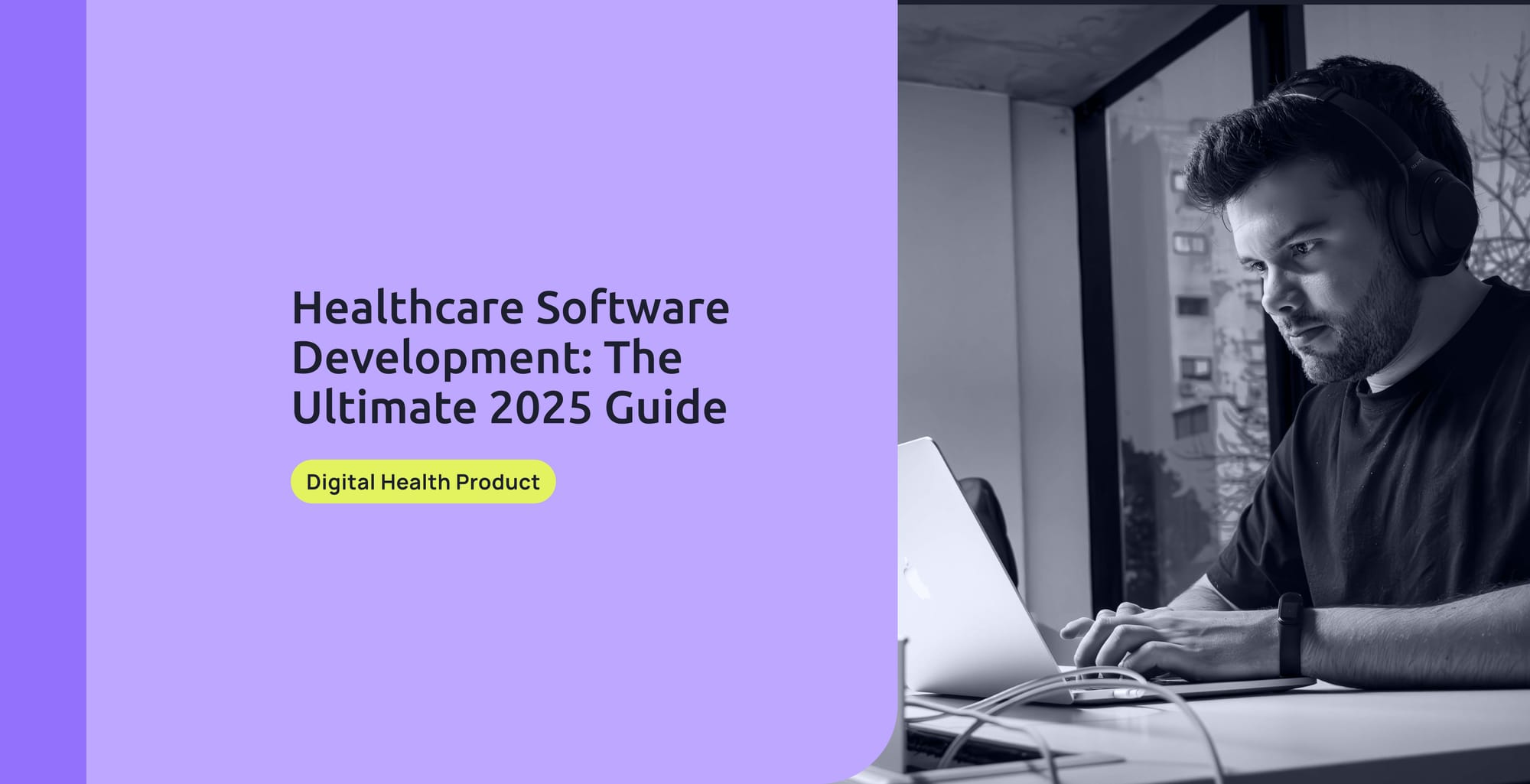Healthcare is no longer limited to what happens inside hospitals or clinics. Patients now expect digital-first care, from scheduling appointments online to viewing their medical records on a smartphone. This shift places increasing pressure on healthcare organizations to deliver solutions that are not only efficient and secure but also intuitive and patient-friendly.
At the heart of this transformation is healthcare software development. In 2025 what we see in events and conferences is no longer future trends or optional innovations; they are essential for providers seeking to remain both competitive and compliant in a rapidly evolving healthcare landscape
In this guide, we aim to include everything you need to know and understand about healthcare software development, its intricacies and nuances.
Table of Contents
- What Is Healthcare Software Development?
- Why Healthcare Software Development Matters in 2025
- What are the Main Types and Applications of Healthcare Software?
- Compliance & Regulatory Considerations
- What Technologies Are Shaping Healthcare Software Development?
- What do healthcare software development companies do? How can I choose one for my organization?
- What factors should be considered when choosing a healthcare software development company?
- How much does healthcare software development cost?
- FAQ
pssss... yes.. you! We put together an AI generated podcast about this article in case you want to check it out!
What Is Healthcare Software Development?
Healthcare software development is the process of building digital solutions tailored specifically for the medical industry. Unlike generic business applications, these tools must strike a balance between usability, scalability, and regulatory compliance while supporting complex clinical and operational workflows.
Common examples where development would be needed include:
- Electronic Health Record (EHR) & Electronic Medical Record (EMR) systems: These systems help centralize patient data, including demographics, allergies, labs, and treatment history. Development would be needed here for specific integrations or personalizations tailored to the organization and practice.
- Telemedicine platforms: enabling remote consultations and file sharing, help extend access to care. Healthcare software development plays a crucial role here, guaranteeing a safe and compliant connection between devices.
- Medical billing and revenue cycle management software: They help optimize financial operations, reduce errors, and accelerate reimbursements. Again, the role of healthcare software development is to enable integrations and customization for each provider to your practice or organization.
- Remote patient monitoring apps: These apps track vital signs and health metrics using wearable devices for proactive care. Development enables sensors from various wearables to connect with other devices, providing data that helps doctors and physicians make more informed decisions.
- Hospital management systems: Software that optimizes operational efficiency, staff workflows, and resource allocation is standard in all industries. Particularly, in healthcare, these programmes have been around for a while, and custom healthcare software development is perfect to adapt to any practice, hospital, or health system’s needs.
- Healthcare CRM solutions: To manage patient relationships, improve care personalization, and track outcomes, digital health organizations utilize healthcare CRM solutions. Whether they need integrations, personalizations, or simply to make sure they are updated, healthcare software development is needed.
These solutions increasingly leverage AI, IoT, cloud computing, and blockchain technology, making them secure, innovative, and future-ready.
Why Healthcare Software Development Matters in 2025
The demand for custom healthcare software is surging as the healthcare industry undergoes a digital transformation. Key drivers include:
- Patients demand digital-first care: Over 60% of patients now prefer online healthcare services when available (McKinsey).
- Telemedicine is mainstream: Originally a necessity during the COVID-19 pandemic, remote care has become a permanent model.
- AI & predictive analytics reshape care: From diagnostics to personalized medicine, AI supports better decision-making and patient outcomes and is now reshaping the digital health landscape.
- Wearables and IoT devices improve preventive care: Real-time health tracking has empowered patients to take health into their own hands and has also opened a wide range of new possibilities for research and clinical trials.
For healthcare providers, the message is clear: adopt digital solutions or risk falling behind.
What are the Main Types and Applications of Healthcare Software?
As mentioned before, the software development landscape in healthcare is diverse, with solutions designed to improve patient care, optimize operations, and enhance data security. These platforms and applications are revolutionizing the industry. Let us introduce you to a glossary of the most commonly used terms in the industry.
- Electronic Health Record (EHR) Software: Manages patient data electronically, including medical history, allergies, lab results, and demographics. EHRs improve care coordination and data mobility, with many systems including patient portals.

- Telemedicine Software: Platforms that allow healthcare professionals to diagnose and treat patients remotely via video conferencing and file-sharing, expanding access to care. It enhances patient communication and addresses challenges like increased demands and aging populations.
- Hospital Information Systems (HIS): Manages healthcare data, facilitating the collection, storage, management, and transmission of patient medical records. These systems support clinical decision-making, operational management, and healthcare policy decisions.
- Mobile Health Applications (mHealth): Enable users to monitor their well-being, manage chronic conditions, and track physical activity and diet, empowering them to control their daily health.
- E-Prescribing Software: Enables healthcare providers to send prescriptions directly to pharmacies, enhancing patient convenience and streamlining workflows.
- Urgent Care Software: Apps that allow patients to receive emergency care remotely, reducing the need for in-person visits.
- Healthcare CRM Software: Helps organizations maintain strong patient relationships by managing contacts, improving care quality, and providing performance insights.
- Laboratory Information Management Systems (LIMS): Enhances the accuracy of lab results by managing sample data, automating workflows, and integrating instruments.
- Radiology Information Systems (RIS): Streamlines radiology department workflows by tracking patient imaging, scheduling appointments, managing results, and handling billing.
- Pharmacy Management Software: Ensures smooth operations by tracking inventory, managing expired medications, and providing refill reminders.
- Health Information Exchange (HIE) Software: Enables the secure exchange of patient health information between healthcare providers, improving collaboration and care speed.
- Billing and Revenue Cycle Management Software: Tracks billing and revenue throughout the patient lifecycle, optimizing financial operations for healthcare providers.
- AI-powered Healthcare Software: Enhances diagnostics, predicts outcomes, and optimizes administrative tasks, making clinical processes more efficient and accurate. AI's role extends to precision medicine, imaging analysis, and managing vast datasets.
- Virtual Health Assistants and Chatbots: AI-driven tools that improve patient engagement by answering health questions, scheduling appointments, and offering basic medical advice.
Compliance & Regulatory Considerations
Healthcare software must meet regulatory standards to protect patients and maintain trust. Depending on jurisdiction, these may include:
- HIPAA (U.S.): Protects patient health information
- GDPR (EU): Governs data privacy for European patients
- HL7 / FHIR: Standards for secure medical data exchange
- FDA approval: Required for software-as-a-medical-device (SaMD)
Non-compliance can result in fines, legal action, and reputational damage. Partnering with a development team experienced in healthcare regulations is critical. Whenever a covered entity collaborates with an outside partner, it is required to sign a Business Associate Agreement (BAA). This agreement outlines the rules governing the partner's access to, use of, and protection of protected health information (PHI).
What Technologies Are Shaping Healthcare Software Development?
Artificial Intelligence (AI) and Machine Learning (ML)
It is not surprising that AI has made significant inroads into the healthcare industry, as it has also impacted every other sector. From analyzing radiology scans to predicting patient deterioration, AI-driven tools are supporting clinicians in making faster, more accurate decisions. Some uses include:
- Diagnostics: AI systems, such as FDA-approved imaging tools, can detect early-stage cancers, heart conditions, and neurological disorders with high accuracy.
- Personalized Care: Predictive analytics suggest tailored treatment plans, improving outcomes and reducing unnecessary interventions. Machine Learning (ML), a subset of AI, is particularly valuable in precision medicine, where algorithms identify the best treatment pathways for individual patients based on genetics, medical history, and lifestyle data.
- Administrative Efficiency: AI-powered chatbots and automated coding/billing reduce paperwork, freeing up medical staff to focus on patient care.
In 2025, expect the adoption of AI and ML to continue accelerating, particularly in predictive diagnostics and automated hospital workflows.

Blockchain for Data Security
Data privacy and interoperability are among the most significant challenges in healthcare. Blockchain offers a decentralized and transparent solution for managing sensitive patient data. Instead of relying on centralized databases that are vulnerable to breaches, blockchain ensures records are encrypted, immutable, and securely shared across providers. Blockchain in healthcare can be used for:
- Data Integrity: Every transaction is verified, ensuring tamper-proof records.
- Interoperability: Different healthcare systems can securely exchange data without compatibility issues.
- Patient Trust: Patients have more control over their own health records, deciding who can access them.
As healthcare breaches remain the most costly of any industry, blockchain is expected to play a critical role in building patient trust and compliance.
Internet of Things (IoT) and Internet of Medical Things (IoMT)
Acording to IBM, the Internet of Things (IoT) refers to a network of physical devices, vehicles, appliances, and other physical objects that are embedded with sensors, software, and network connectivity, allowing them to collect and share data.IoT devices, such as smartwatches, biosensors, and connected medical equipment, are revolutionizing healthcare. Some of the most common use cases in healthcare are:
- Remote Patient Monitoring: Devices track vital signs, such as heart rate, blood sugar, or oxygen saturation, and send data directly to healthcare providers.
- Early Disease Detection: Continuous monitoring enables early warnings for conditions such as arrhythmias or diabetic complications.
- Operational Efficiency: Connected hospital devices enhance workflows, streamline inventory management, and facilitate efficient equipment maintenance.
By 2025, IoMT is projected to be a multi-billion-dollar market, fueling preventive and personalized care.
Virtual Reality (VR) and Augmented Reality (AR)
VR and AR are breaking new ground in both medical education and patient care:
- Medical Training: Surgeons can practice complex procedures in a risk-free, immersive environment before entering the operating room.
- Patient Education: AR can visually demonstrate a treatment plan, helping patients better understand procedures.
- Therapy & Rehabilitation: VR tools are used for pain management, exposure therapy in mental health, and guided physical therapy sessions.
Expect these technologies to move beyond training into mainstream clinical applications, including robotic-assisted surgeries.
Self-Care and Patient Portals
Today’s patients want more control over their healthcare journeys. Self-service portals and mobile apps enable users to book appointments, review test results, pay bills, and communicate with providers remotely. This matters because of:
- Accessibility: Patients in rural or underserved areas can access care without having to travel.
- Continuity of Care: Records are always available, reducing duplication and errors.
- Engagement: Patients become active participants in managing their own health.
With digital-first healthcare becoming the standard, patient portals are a must-have for clinics and hospitals in 2025.
Advanced Electronic Medical Records (EMR)
Traditional EMR systems often suffer from fragmentation. Different specialists and facilities can’t easily share information. Future EMR platforms aim to integrate patient data across the entire care continuum, providing a 360-degree view.
- Interoperability: Seamless data exchange across providers and specialties.
- Smart Analytics: AI-powered EMRs highlight patterns and flag potential risks.
- Care Coordination: Teams can collaborate more effectively with unified patient records.
Advanced EMRs will become the backbone of value-based care, ensuring efficiency and better patient outcomes.
Chronic Disease Management Tools
Chronic illnesses like diabetes, hypertension, and heart disease account for a large share of healthcare spending in the US. Mobile health apps and wearable devices are increasingly vital in tracking and managing these conditions:
- Real-time Monitoring: Blood pressure cuffs, glucose monitors, and ECG devices send continuous data.
- Alerts & Insights: Patients and providers receive notifications when readings go outside normal ranges.
- Empowered Patients: Users gain visibility into lifestyle patterns affecting their health.
By supporting preventive and proactive care, chronic disease management tools reduce hospitalizations and improve quality of life.
What do healthcare software development companies do?
Healthcare software development companies partner with hospitals, medical organizations, and research institutions to create, implement, integrate, and personalize solutions for any of the aforementioned cases.
There are different types of companies offering a range of services:
- Healthcare Software as a service: AI-powered diagnostics, radiology and imaging enhancements, operations and resource management, security and regulatory compliance.
- Healthcare Apps: Telehealth services, remote monitoring, virtual health assistants, AI-driven chatbots, personalized treatment, patient engagement tools.
- Custom Solutions: Tailored software supporting digital transformation, AI/machine learning implementation, and secure data exchanges/integration. Other services also include IT consulting, mobile/web development, cloud solutions, IT outsourcing, UI/UX design, software integration, cybersecurity solutions, maintenance, and support.
What factors should be considered when choosing a healthcare software development company? How can I choose one for my organization?
Choosing the right healthcare software development company is crucial for an organization's success. In general, for any project, this is a step-by-step guide that can help:
- Identify your company's needs: Define goals, challenges, required features, and functionalities, considering adaptability.
- Discover and list potential companies: Use directories, review platforms, client testimonials, and case studies. Assess their portfolio, size, location, cultural fit, and relevant industry certifications.
- Assess technical expertise: Check proficiency in programming languages, frameworks, custom software development practices, experience with healthcare regulations, quality assurance procedures, and data security approach.
- Estimate communication and collaboration skills: Schedule consultations to assess responsiveness, communication style, project management, willingness to collaborate, flexibility, and cultural alignment.
- Evaluate prices and contracts: Request detailed agreements, compare prices, and the scope of services. Examine terms, intellectual property rights, privacy agreements, and potential hidden costs (maintenance, support, updates).
- Conduct a reference check: Contact former customers for feedback on project timelines, quality, follow-up support, and ability to perform on time and budget.
- Consider additional factors: Assess scalability, adaptability to future growth, data protection practices, integration options with existing systems, and the vendor's innovation and agility.
For a more detailed process of how to choose one, you may want to check this post.
How much does healthcare software development cost?
Several factors influence the cost of healthcare software development in 2025:
- Complexity of the software: Advanced features, custom designs, and complex integrations increase time and resources.
- Regulatory compliance: Significant investment is required for cybersecurity and adherence to healthcare standards.
- Integration of advanced technologies: Incorporating AI, blockchain, and other sophisticated tools adds to the cost.
- Team type: In-house teams typically have higher costs than outsourcing, which can offer similar quality for a lower price.
- Team size and expertise: Larger, more experienced teams with a complex technology stack increase costs but provide specialized skills.
- Development timeline: More intricate solutions require more extended development periods, resulting in increased costs.
- Team location: Software development costs vary by region. Nearshoring might be your best option. If your product requires real-time communication, strong synergy, and quality while optimizing costs, nearshoring might be your best choice.

FAQ
Main frequently asked questions (FAQs) regarding software development in healthcare:
What is healthcare software development?
Healthcare software development is the process of designing and building digital tools to enhance medical services, streamline healthcare operations, and support improved patient outcomes. It involves creating platforms that manage complex interactions and administrative tasks between patients, healthcare professionals, and administrators, focusing on streamlining communication, enhancing care quality, and ensuring the privacy and accuracy of records. It's an overarching platform that helps simplify daily activities and interactions in the healthcare industry, allowing for easy and secure storage and exchange of patient data.
What makes healthcare software development different from other projects, and what are its key aspects?
What sets it apart from other domains is the weight of responsibility, as any mistake can have a significant impact on people's health. Core aspects include regulatory compliance (e.g., HIPAA, GDPR, MDR, FDA), data privacy and security (especially for Protected Health Information (PHI) with end-to-end encryption and strict access control), data interoperability (systems must work in sync using standards like FHIR or HL7), and risk and safety management (especially for SaMD or SiMD, validating clinical accuracy).
What types of software are used in healthcare?
Healthcare uses a wide variety of software, including:
- Patient software for health monitoring, mental health, medication tracking, health & wellness, virtual health assistants/chatbots, telemedicine, and apps with wearable device integration.
- Diagnostics and treatment software like e-prescribing, AI-powered healthcare software for diagnostics, Clinical Decision Support Systems (CDSS), medical image analysis, and innovative diagnostic solutions.
- Information systems and data exchange, such as Electronic Health Record (EHR) software, Radiology Information Systems (RIS), Laboratory Information Management Systems (LIMS), Picture Archiving and Communication Systems (PACS), Health Information Exchange (HIE) software, and blockchain software for tamper-proof record-keeping.
- Management software, including Healthcare CRM, pharmacy management, healthcare analytics, Business Intelligence (BI), medical inventory management, billing and revenue cycle management (RCM), and medical education & practice software.
- Other types include Hospital Information Systems (HIS) and mobile health applications (mHealth).
What do healthcare software development companies offer?
Healthcare software development companies typically offer full-cycle, end-to-end software development services, including IT consulting, mobile/web development, cloud solutions, and IT outsourcing. They provide solutions for data storage and exchange, medical invoicing systems, CRM systems, and other tools that enhance the speed, safety, and efficiency of healthcare interactions. Their offerings often include custom healthcare software development, telemedicine software development, healthcare IT consulting, and more.
What is the Software Development Life Cycle (SDLC) in healthcare?
The SDLC in healthcare is a process that encompasses planning, design, development, testing, deployment, and maintenance of healthcare software. Innowise's process typically involves project planning, requirements engineering, solution design and UX/UI design, software development and testing, compliance verification, software launch, and post-launch maintenance. Testing is integrated throughout the development process to boost quality and compliance.
What are the main regulatory challenges in healthcare software development, and can companies help with compliance?
Healthcare software development projects must comply with numerous regulations, including HIPAA, GDPR, HITECH, MDR, and FDA, which add layers of complexity. It's crucial to comply with evolving privacy laws and regional standards while protecting sensitive medical data. Yes, top companies ensure their solutions comply with these healthcare regulations and standards by considering them from the outset, planning projects around them, and collecting necessary project documentation at each stage.
Why is interoperability crucial in healthcare software systems?
Interoperability is vital because it enables the seamless integration and exchange of data across various healthcare software systems. This improves coordination, reduces medical errors, prevents duplicate tests, speeds up clinical decision-making, and ultimately enhances patient care. Standards like HL7, FHIR, DICOM, and CDA are essential for consistent data representation.
How long does it take to develop healthcare software?
The development timeline varies significantly depending on the complexity, features, and integration requirements. Simple software can be developed in 1-3 months, while complex solutions with significant work can take 6 months or more to develop and implement.
How vital is healthcare-specific knowledge in software development?
It is critical. Healthcare-specific knowledge ensures compliance with regulations, facilitates seamless EHR integration, and is crucial for adequate patient data protection. It allows developers to address the unique needs and challenges of the industry, such as complex clinical workflows and high-stakes projects.
Conclusion
Healthcare software development isn’t just about coding; it’s about trust, compliance, and measurable patient outcomes. By 2025, providers who invest in custom digital solutions will reduce costs, improve efficiency, and emerge as leaders in healthcare.
The future is digital, and your patients already expect it.


